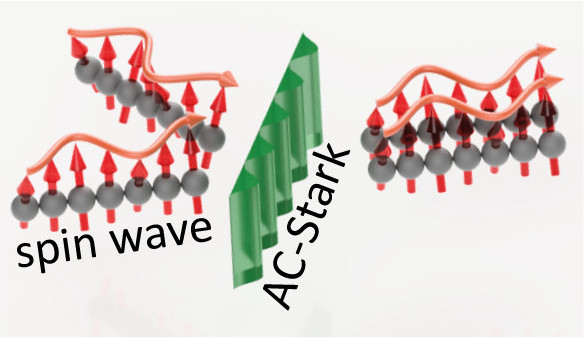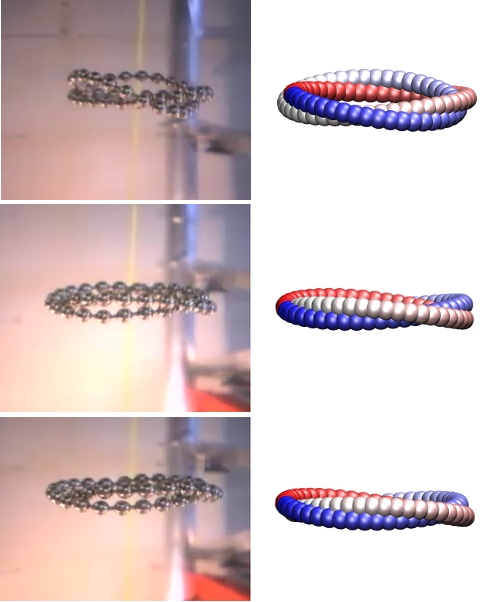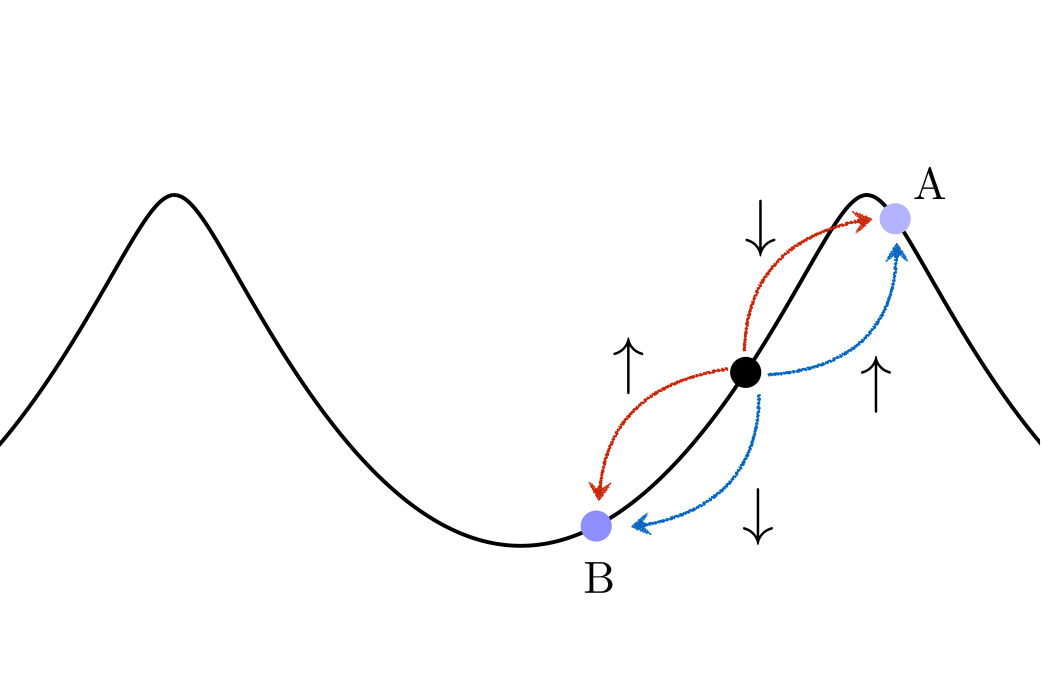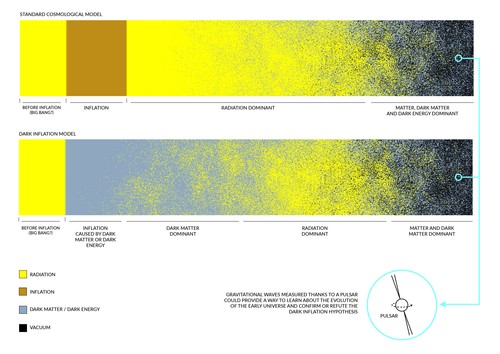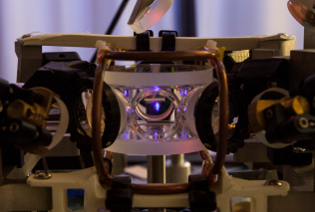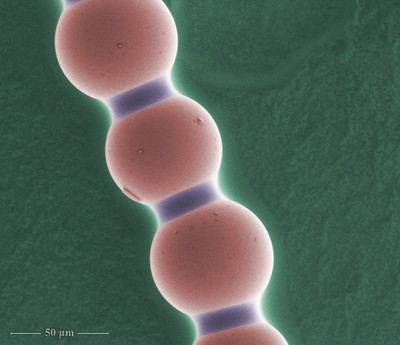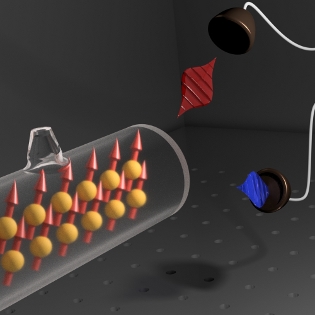Press releases
Quantum interference in service of information technology
2019-07-22
Scientists from the Faculty of Physics, University of Warsaw, in collaboration with the University of Oxford and the NIST agency, have shown that quantum interference enables processing of large sets of data faster and more accurately than with standard methods. Their studies may boost applications of quantum technologies in e.g. artificial intelligence, robotics and medical diagnostics. The results of this work have been published in the Science Advances journal. | More
Spin waves pair up like photons
2019-05-06
When two identical photons arrive at a half-reflecting piece of glass, in the quantum mechanical world they are always either both transmitted or reflected - they pair up. This effect, termed Hong-Ou-Mandel interference, should occur not only for photons, but for any bosons. Doctoral students at the Faculty of Physics, University of Warsaw (Quantum Memories Laboratory) now demonstrated this effect for bosons known as “spin waves”. Using a new method of manipulating the spin waves using a spatially-shaped laser beam they were able to realize an analogue of a half-reflecting glass (beam-splitter) for spin waves and demonstrate their Hong-Ou-Mandel interference. | More
International consortium involving scientists from the Faculty of Physics, University of Warsaw, prepares recommendations for the first standards of quantum protocols
2019-01-07
In the face of the need to set international standards for the use of quantum technologies in science and industry, a consortium formed by 14 organizations from 6 countries, led by the Hudson Institute based in Washington, D.C., has prepared two recommendations. They cover quantum sources of entropy (randomness) and quantum key distribution systems. The recommendations have been submitted today to the International Telecommunication Union (ITU) in Geneva in order to commence the work on the relevant international standards. | More
Infinite-dimensional symmetry opens up possibility of a new physics – and new particles
2018-11-15
The symmetries that govern the world of elementary particles at the most elementary level could be radically different from what has so far been thought. This surprising conclusion emerges from new work published by theoreticians from Warsaw and Potsdam. The scheme they posit unifies all the forces of nature in a way that is consistent with existing observations and anticipates the existence of new particles with unusual properties, which may even be present in our close environs. | More
The crazy dance of falling knots
2018-09-25
Can the topology of microobjects influence the way they move in a fluid? Experiments and simulations of Polish and Swiss researchers published in the Physical Review Letters show that the dynamics of elastic chains settling in a fluid depends on the way they are knotted. The settling chains form flat, toroidal structures composed of several intertwined loops, which swirl around each other. The study is important for the proper interpretation of sedimentation and centrifugation experiments of biomolecules. | More
Quantum non-locality in ultra-cold atomic gases
2018-06-20
Non-locality, Einstein’s „spooky action at a distance”, has already been observed between quantum objects separated by more than one kilometer. This achievement is not a surprise – recent years have seen a major advancement in the quest for non-local systems. In their „Physical Review Letters” publication, researchers from the Faculty of Physics, University of Warsaw present a novel and versatile method for creating and detecting such correlations in a many-body system of ultra-cold atoms | More
Dark inflation opens up a gravitational window onto the first moments after the Big Bang
2018-06-07
Dark matter and dark energy may have driven inflation, the exponential expansion of the Universe moments after the Big Bang. A new cosmological model proposed by physicists at the University of Warsaw, which takes dark inflation into account, is the first to outline a precise chronology of the main events during the early history of our Universe. The model makes a spectacular prediction: that it should be possible to detect gravitational waves that were formed just fractions of a second after the creation of spacetime | More
Quantum memory with record-breaking capacity based on laser-cooled atoms
2017-12-15
The emerging domain of parallelized quantum information processing opens up new possibilities for precise measurements, communication and imaging. Precise control of multiple stored photons allows efficient handling of this subtle information in large amounts. In the Quantum Memories Laboratory at Faculty of Physics, University of Warsaw a group of laser-cooled atoms has been used as a memory which can store simultaneously up to 665 quantum states of light. The experimental results have been published in a prestigious Nature Communications journal | More
Semiliquid chains pulled out of a sea of microparticles
2017-07-20
An electrode brought to the surface of a liquid that contains microparticles can be used to pull out surprisingly long chains of particles. Curiously enough, the particles in the chains are held together by a thin layer of liquid that covers them. This spectacular phenomenon, discovered with the involvement of Polish scientists and described in the prestigious journal Nature Communications, holds promise for a broad variety of applications | More
Quantum entanglement between a single photon and a trillion of atoms
2017-03-01
New light is shed on the famous paradox of Einstein, Podolsky and Rosen after 80 years. A group of researchers from the Faculty of Physics at the University of Warsaw has created a multidimensional entangled state of a single photon and a trillion of hot rubidium atoms. This hybrid entanglement has been stored in the laboratory for several microseconds. The research has been published in the prestigious Optica journal | More







